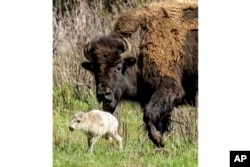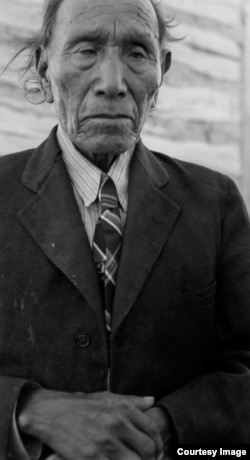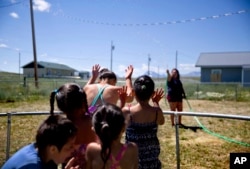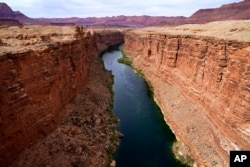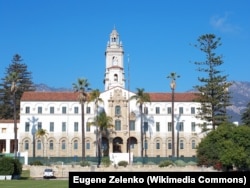Native Americans
Native American news roundup, June 9-15, 2024

Catholic bishops apologize to Native Americans
The Catholic Church on Friday issued a carefully worded apology to Native Americans for a “history of trauma” caused in part by its “abandonment” of the community.
During their spring assembly in Louisville, Kentucky, the U.S. Conference of Catholic Bishops (USCCB) approved a document titled, “Keeping Christ’s Sacred Promise: A Pastoral Framework for Indigenous Ministry,” which cites “epidemics, national policies, and Native boarding schools” as sources of that trauma.
The 56-page document also notes that “European and Eurocentric world powers” used language from 14th and 15th century public decrees known as Papal bulls to justify the enslavement and mistreatment of Native Americans and dispossession from their lands. “Let us be very clear here: The Catholic Church does not espouse these ideologies,” the document reads.
The document stops short of formally rescinding the bulls, as Indigenous groups have long requested. Nor does the document reference widespread abuse of Indigenous children by Catholic clergy.
“Many Christians have committed evil acts against indigenous peoples for which recent Popes have asked forgiveness on numerous occasions,” it states.
Bishops originally commissioned the document in 2020 but put it on hold in November 2023 concerned that certain language could create liability issues for the Church. The language in question referenced “past sins” and “wounds inflicted on Native peoples” by “some members of the Church,” the Catholic news site The Pillar reported.
Read more:
Florida parole board to decide on clemency for Leonard Peltier
American Indian Movement activist Leonard Peltier appealed his case before a Florida parole board Monday after having served most of his life in prison.
Peltier, a member of the Turtle Mountain Band of Chippewa in North Dakota, was convicted in 1977 of killing two FBI agents during a 1975 standoff on the Pine Ridge Indian Reservation in South Dakota and sentenced to two consecutive life sentences.
Nick Tilsen, president and CEO of the Indigenous-led advocacy group NDN Collective, was allowed to testify at the parole hearing.
“Face to face with the federal government, I got to tell them that Leonard is revered globally as a political prisoner fighting against the unjust systems that oppress our people,” said Tilsen as quoted on the collective’s Facebook page.
Peltier, 79, claims he is innocent of the charges. The parole board is expected to announce their decision in mid-July.
Makah hunters in Washington state to resume whale hunts
The U.S. government announced this week it will allow the Makah Tribe in Washington to resume hunting grey whales, a right guaranteed them by the 1855 Treaty of Neah Bay.
The National Oceanic and Atmospheric Administration’s National Marine Fisheries Service will allow the Makah Tribe to resume hunting up to 25 Eastern North Pacific gray whales over a 10-year period in U.S. waters.
“This final rule represents a major milestone in the process to return ceremonial and subsistence hunting of Eastern North Pacific gray whales to the Makah Tribe,” said Janet Coit, assistant administrator for NOAA Fisheries. “The measures adopted today honor the Makah Tribe's treaty rights and their cultural whaling tradition that dates back well over 1,000 years and is fundamental to their identity and heritage.”
The Marine Mammal Act of 1972 banned hunting, harassing, capturing or killing any marine mammal and prohibits the import and export of marine mammals and their parts or products.
The Makah Tribe in 2005 asked NOAA for a waiver that would allow them to hunt gray whales for ceremonial and subsistence purposes and to make and sell items created from harvested whales.
Read more:
Rare white buffalo calf of special significance to Lakota
While camping recently in Yellowstone Park’s Lamar Valley, Montana photographer Erin Braaten captured one-of-a-kind photographs of a white buffalo calf moments after it was born.
White buffalo calves are a rarity; though no formal studies have been conducted, cited statistics say only one in 10 billion buffalo is born white.
They have special spiritual significance to Plains tribes and are featured in many traditional stories.
Before his death in 1950, Lakota spiritual leader and visionary Nicholas Black Elk related to author Joseph Epes Brown why: nineteen generations ago, he said, a mysterious holy woman dressed in white buckskin came to Lakota chief Standing (or High) Hollow Horn and presented him a sacred stone pipe. She also taught him the seven spiritual rituals in which it should be used.
“’Always remember how sacred it is, and treat it as such, for it will take you to the end,’” Black Elk quoted her as saying. “’I am leaving now, but I shall look back upon your people in every age and at the end I shall return.” As she left, tradition holds that she transformed into a white buffalo calf.
The pipe has been passed down from one generation to the next. Today, Miniconjou Lakota spiritual leader Arvol Looking Horse is the 19th pipe holder. It was given to him when he was 12.
Read more:
See all News Updates of the Day
Native American news roundup July 14-20, 2024

Native Americans discuss impact of a second Trump term on tribal communities
Native Americans were noticeably absent from the Republican National Convention in Milwaukee, Wisconsin, this week. The exception was James Crawford, chairman of the Forest County Potawatomi Community in that state, who opened Day Two of the convention with a speech in which he reminded the audience that events were taking place in lands that were part of the original Potawatomi homelands.
“Our ancestors occupied these lands for hundreds of years, fishing area, rivers and lakes, hunting the land, tapping maple tree groves for sugar and harvesting crops and fields each fall,” Crawford said.
In keeping with Tuesday evening’s theme, “Make America Safe Again,” Crawford addressed threats to Native American safety.
“The growing use and abuse of illegal drugs are claiming countless lives on reservations across this country,” he said, “and Native American women and girls continue to be exploited, trafficked and subjected to violence at reprehensible levels.”
While he did not expressly endorse the Republican ticket, Crawford said he looked forward to working with Republicans to achieve a safe America.
Watch Crawford’s speech below:
Native media’s take on the convention
“Native American Calling,” a radio talk show heard across dozens of public, community and tribal radio stations in the United States and Canada, broadcast live from the event all week, bringing together prominent Native American journalists and business leaders to discuss what a second Donald Trump term might mean for tribal communities.
“Quite clearly, the Republican platform has no mention of Native Americans,” Native News Online editor Levi Rickert noted.
The official platform calls for changes in some federal policies that could impact Native Americans, such as cutting federal funding for any schools pushing “critical race theory (CRT),” an academic concept that racism is built into U.S. legal and government systems, and other “inappropriate racial, sexual or political content.”
The anti-CRT movement has put pressure on many school districts to leave Native American history out of the classroom.
Native American Calling guest panelist Shaun Griswold (Laguna/Zuni/Jemez), editor of Source New Mexico, drew Representative Lauren Boebert into an impromptu interview at the convention in which she stated her desire to head the Interior Department, which manages more than 70% of all federal public lands.
“Public lands are something that are very dear to me,” she said. “ ... and I absolutely care for their [tribal] sovereignty and their prosperity, and that the state and local governments and the federal government is not infringing on your sovereign right."
That said, Boebert said she opposes land grabs by the federal government, such as Joe Biden’s expansion of the Bears Ear National Monument, land sacred to several tribes. See interview, below:
Back to square one
VOA reached out to Shannon O’Loughlin (Choctaw), CEO of the Association on American Indian Affairs (AAIA). She said the last time she saw a Republican platform address Indian Country was in 2016 during Donald Trump's first campaign.
That platform noted that the federal government has not honored its government-to-government relationship with and trust responsibility for tribes.
“It was something that I don't think the Trump administration really ever adopted,” she said.
She expressed concern over Trump’s plans to overhaul civil service by firing thousands of federal employees and replacing them with those loyal to him and the Republican Party.
“This [election cycle] isn't just about presidents,” O’Loughlin said. “It's also about the people who have been working on Native issues within the agencies, sometimes for decades.”
As mandated by the Indian Reorganization Act of 1934, the Interior Department gives preference to Native Americans when hiring for Bureau of Indian Affairs or Indian Health Service jobs.
If these people were to be fired, O’Loughlin worries they would be replaced with people who “have no clue about the basis of federal Indian law, policy and the government-to-government relationship.”
And that would bring groups like the AAIA back to square one.
“It's difficult enough for Native peoples. With every single turnover in the administration and Congress, we have the burden of educating all newly appointed or elected officials,” she said. “We are worried that could change how new Interior Department employees would interpret and oversee many of the statutes under U.S. code.”
Killer of 2 Alaska Native women sentenced to 226 years
A judge in Anchorage, Alaska, this week sentenced a convicted murderer to 226 years in prison for the torture and murder of two Alaska Native women.
Brian Smith was convicted in February of 14 counts, including two counts of first-degree murder, second-degree sexual assault, tampering with physical evidence and misconduct involving a corpse.
As VOA reported in 2019, the victims were Kathleen Jo Henry from the Yupik village of Eek in southwestern Alaska, and Veronica Abouchuk, also Yupik, from the western Alaska village of Stebbins.
The case came to light after Anchorage Police Department homicide detectives were alerted by a woman who found a memory card on the ground labeled “Homicide at midtown Marriott.” The videos revealed that Smith had tortured an unknown woman before killing her, disposing of her body and attempting to hide the evidence.
Read more:
Native American news roundup, July 7-13, 2024

Arizona congressional delegation introduces $5 billion tribal water rights legislation
Arizona's congressional delegation Monday introduced a new bill, The Northeastern Arizona Indian Water Rights Settlement Act of 2024, which would ratify a $5 billion water rights settlement with three Native American nations in the southwestern U.S.
This settlement, the largest of its kind proposed by Congress, seeks to resolve a decadeslong dispute involving the Navajo Nation, the Hopi and the San Juan Southern Paiute tribes.
The agreement, approved by the tribes in May, guarantees them over 56,000 acre-feet of Colorado River water and specific groundwater rights. It also establishes a homeland for the San Juan Southern Paiute Tribe.
Funds from the legislation will be used to develop and maintain water infrastructure, including a $1.75 billion pipeline.
“Ratifying this settlement honors our commitment to the tribes and helps secure our state’s water future, and we’ll work together as Republicans and Democrats to get it done,” Democratic Senator Mark Kelly said in a statement on his website.
San Juan Southern Paiute tribal President Robbin Preston Jr. said the bill, if passed, would change tribe members’ lives.
“With reliable electricity, water and housing, our people will have opportunities that have never been available to us before,” he said in a statement. “This legislation is more than a settlement of water rights; it is the establishment of an exclusive reservation for a tribe that will no longer be forced to live like strangers in our own land.”
Read more:
Tribes, feds plan future of Bears Ears National Monument
Five Native American tribes and the federal government are collaboratively reviewing over 20,000 public comments on the future management of the Bears Ears National Monument in Utah. The public comment period, which ended on June 11, showed wide support for incorporating Traditional Indigenous Knowledge in managing the monument.
The Bears Ears Inter-Tribal Coalition, comprising the Zuni Pueblo, Navajo Nation, Hopi Tribe, Ute Mountain Tribe and Ute Indian Tribe of the Uintah and Ouray, is working with the U.S. Forest Service and the Bureau of Land Management to finalize a co-management plan. This plan, the first of its kind, integrates tribal ancestral history, land conservation and traditional education.
Bears Ears is the most significant archaeological area in the U.S., containing more than 100,000 cultural and archaeological sites.
President Joe Biden restored the Bears Ears monument in October 2021 after the Trump administration significantly reduced its size. In 2023, a federal judge dismissed an attempt by Arizona lawmakers to reverse Biden’s decision. The monument’s designation aims to protect it from future uranium mining and follows the National Park Service's commitment to greater tribal involvement in federal land decisions.
Read more:
Feds expand support for tribal home-visiting programs
The U.S. Administration for Children and Families (ACF), an arm of the U.S. Department of Health and Human Services, has awarded six tribal communities $3 million to expand home-visiting programs for families with young children, part of a larger $30 million investment in the Tribal Maternal, Infant and Early Childhood Home Visiting program.
This funding aims to develop and strengthen tribes’ ability to support and promote the health and well-being of expectant families and families with young children, and prevent children’s placement in foster care.
“We are very excited about this new round of grant recipients, who will develop their programs in collaboration with their communities reflecting their cultures and representing the vision, priorities and hopes they have for future generations,” ACF Principal Deputy Assistant Secretary Jeff Hild said in a statement. “As Tribal home visiting continues to expand, we look forward to engaging with grant recipients and honoring tribal sovereignty as they continue in their journey to provide essential services for young American Indian and Alaska Native children and their families.”
Read more:
Abenaki leaders dispute the legitimacy of unrecognized New Hampshire tribe
The Abenaki community in Quebec has long denounced self-styled Abenaki tribes in Vermont and New Hampshire who operate on claims of Abenaki heritage.
Most recently, a nonprofit called the Ko’asek Traditional Band of the Sovereign Abenaki Nation (KTBSAN) announced plans to build a cultural center in the small New Hampshire city of Claremont on land gifted to them in 2020. In 2023, the city granted their zoning request.
But the KTBSAN is not state or federally recognized, and the Odanak (Abenaki) First Nation in Canada says the New Hampshire group is fake and has no right to speak to Abenaki history and culture.
Historically, Western Abenaki homelands stretched from southeastern Quebec into present-day Vermont, New Hampshire, Maine and north-central Massachusetts. Missionized by French Jesuits in the 17th century, the Abenaki allied themselves with the French in a series of struggles with England over trade. Later, Many Abenaki withdrew to Canada, eventually settling in Saint-François-du-Lac, Quebec.
KTBSAN chief Paul J. Bunnell, a genealogist originally from Massachusetts, told New Hampshire Public Radio that it wasn’t until late in life that he discovered his Abenaki ancestry, information “which we were never told we even had, because it was a taboo subject in most families because we were driven underground because of persecutions.”
Read more:
North Dakota tribe goes back to its roots with a massive greenhouse operation

A Native American tribe in North Dakota will soon grow lettuce in a giant greenhouse complex that when fully completed will be among the country's largest, enabling the tribe to grow much of its own food decades after a federal dam flooded the land where they had cultivated corn, beans and other crops for millennia.
Work is ongoing on the Mandan, Hidatsa and Arikara Nation's 1.3-hectare greenhouse that will make up most of the Native Green Grow operation's initial phase. However, enough of the structure will be completed this summer to start growing leafy greens and other crops such as tomatoes and strawberries.
"We're the first farmers of this land," Tribal Chairman Mark Fox said. "We once were part of an Aboriginal trade center for thousands and thousands of years because we grew crops — corn, beans, squash, watermelons — all these things at massive levels, so all the tribes depended on us greatly as part of the Aboriginal trade system."
The tribe will spend roughly $76 million on the initial phase, which also will include a warehouse and other facilities near the tiny town of Parshall. It plans to add to the growing space in the coming years, eventually totaling about 5.9 hectares, which officials say would make it one of the world's largest facilities of its type.
The tribe's fertile land along the Missouri River was inundated in the mid-1950s when the U.S. Army Corps of Engineers built the Garrison Dam, which created Lake Sakakawea.
Getting fresh produce has long been a challenge in the area of western North Dakota where the tribe is based, on the Fort Berthold Indian Reservation. The rolling, rugged landscape — split by Lake Sakakawea — is a long drive from the state's biggest cities, Bismarck and Fargo.
That isolation makes the greenhouses all the more important, as they will enable the tribe to provide food to the roughly 8,300 people on the Fort Berthold reservation and to reservations elsewhere. The tribe also hopes to stock food banks that serve isolated and impoverished areas in the region, and plans to export its produce.
Initially, the MHA Nation expects to grow nearly 907,000 kilograms of food a year and for that to eventually increase to 5.4 million to 6.4 million kilograms annually. Fox said the operation's first phase will create 30 to 35 jobs.
The effort coincides with a national move to increase food sovereignty among tribes.
Supply chain disruptions during the COVID-19 pandemic led tribes nationwide to use federal coronavirus aid to invest in food systems, including underground greenhouses in South Dakota to feed the local community, said Heather Dawn Thompson, director of the U.S. Department of Agriculture's Office of Tribal Relations. In Oklahoma, multiple tribes are running or building their own meat processing plant, she said.
The USDA promotes its Indigenous Food Sovereignty Initiative, which "really challenges us to think about food and the way we do business at USDA from an Indigenous, tribal lens," Thompson said. Examples include Indigenous seed hubs, foraging videos and guides, cooking videos and a meat processing program for Indigenous animals.
"We have always been a very independent, sovereign people that have been able to hunt, gather, grow and feed ourselves, and forces have intervened over the last century that have disrupted those independent food resources, and it made it very challenging. But the desire and goal has always been there," said Thompson, whose tribal affiliation is Cheyenne River Sioux.
The MHA Nation's greenhouse plans are possible in large part because of access to potable water and natural gas resources.
The natural gas released in North Dakota's Bakken oil field has long been seen by critics as a waste and environmental concern, but Fox said the tribal nation intends to capture and compress that gas to heat and power the greenhouse and process into fertilizer.
Flaring, in which natural gas is burned off from pipes that emerge from the ground, has been a longtime issue in the No. 3 oil-producing state.
North Dakota Pipeline Authority Director Justin Kringstad said that key to capturing the gas is building needed infrastructure, as the MHA Nation intends to do.
"With those operators that are trying to get to that level of zero, it's certainly going to take more infrastructure, more buildout of pipes, processing plants, all of the above to stay on top of this issue," he said.
The Fort Berthold Reservation had nearly 3,000 active wells in April, when oil production totaled 203,000 barrels a day on the reservation. Oil production has helped the MHA Nation build schools, roads, housing and medical facilities, Fox said.
Native American news roundup, June 30-July 6, 2024

Leonard Peltier to remain in Florida prison
The U.S. Parole Commission this week denied parole for American Indian Movement activist Leonard Peltier, who has been incarcerated almost 50 years for the killing of two FBI agents.
Peltier was convicted of two counts of first-degree murder in the deaths of federal agents Jack Coler and Ronald Williams in a June 26, 1975, shooting on the Pine Ridge Indian Reservation in South Dakota. He was sentenced to two consecutive life sentences and has been in prison since 1976.
House Natural Resources Committee ranking member Raul Grijalva, a Democrat from Arizona, expressed his disappointment in the commission's ruling, saying, "The commission had the opportunity to take a small step toward rectifying a decadeslong injustice against Mr. Peltier, but incomprehensibly, they have opted against it."
Federal agents, past and present, hold that Peltier is guilty and shows no remorse for his crime. FBI Director Christopher Wray said in a statement that "justice continues to prevail."
Peltier has an interim hearing about his parole status scheduled for 2026 and a full hearing in 2039.
Read more:
Tribes want a say in Colorado River system water distribution
After a century of being excluded from the discussion, the 30 tribal nations that depend on the Colorado River system are fighting for a greater voice in determining its future when current operating agreements expire in 2026.
The 1922 Colorado River Compact regulated water distribution among seven southwestern states; tribes were not included in those negotiations. Despite holding senior water rights to about a quarter of the river's water, tribes lack access due to funding and legal issues, and this means their water flows downstream to other users.
In April, the Upper Colorado River Commission and six tribes with land in the Upper Basin signed a memorandum of understanding, agreeing to meet about every two months to discuss issues. Still, it does not give tribes a permanent seat on the commission, nor does it give them any authority to make decisions.
Read more:
California Franciscans: Extend deadline for clergy abuse claims for tribes we failed to notify
The Franciscan Province of St. Barbara is asking a bankruptcy court to extend the July 19 deadline for clergy sex abuse claims after a National Catholic Reporter, or NCR, investigation revealed that claim notices had not been sent to seven Native American tribes and communities in Arizona and New Mexico where abusive friars were known to serve.
The St. Barbara Franciscans filed for bankruptcy in late December 2023 in the face of dozens of new allegations of clergy sexual abuse.
A judge on May 22 ordered the St. Barbara Province to mail out "Sexual Abuse Claim Notice Packages" to eight state attorneys general, sheriffs’ offices and other agencies, and 27 newspapers, most of them in California.
The NCR compared the order with a list of "credibly accused" friars the St. Barbara Franciscans maintain on their website, noting that they had failed to send notices to the Colorado River Indian Tribes, Gila River Indian Community, Pascua Yaqui Tribe, San Carlos Apache Tribe, Tohono O'odham Nation and White Mountain Apache Tribe in Arizona, and the Mescalero Apache Tribe in New Mexico.
The Franciscans subsequently asked for the deadline to be extended to August 30 and notified the tribes.
BishopAccountability.org, which tracks clergy abuse cases, reports that 32 U.S. Catholic dioceses and three religious orders have filed for bankruptcy protection in the face of sex abuse accusations.
Read more:
North Carolina housing development is site of significant Native American village
A political fight is underway in North Carolina over what the state archaeologist has called one of the most significant finds ever uncovered — thousands of artifacts and evidence suggesting the presence of a Native American village occupied for centuries before European contact.
The discovery was made on a building site in Carteret County, where developers have already begun building housing.
The North Carolina Office of State Archaeology recommended exploration due to previous discoveries in the area from the 1970s. Construction halted as they dug 16 trenches across more than an acre, uncovering over 2,000 artifacts, including 11 potential human burial sites, 1,700 building post molds, 206 small pits, 45 large pits, 34 pits containing shells and more.
The developers' design engineer, however, dismissed the findings as a "Native American landfill" containing "nothing significant."
State Senator Michael Lazzara agrees and is pushing a bill that allows development to move forward.
Read more:
New theory emerges on Cahokia abandonment
Hundreds of years before Europeans arrived in the Western Hemisphere, Cahokia was the largest North American city north of Mexico and one of the biggest communities in the world.
Founded around 1050 by the Mississippian culture, Cahokia sat on the banks of the Mississippi River near present-day St. Louis, Missouri. At its height, Cahokia had a population of 50,000 but was deserted by 1400 CE. While scientists traditionally blamed drought and crop failure for its abandonment, a new study suggests otherwise.
Washington University researchers Natalie Mueller and Caitlin Rankin found no radical change in plant types.
"We saw no evidence that prairie grasses were taking over, which we would expect in a scenario where widespread crop failure was occurring," Mueller said.
Mueller believes the abandonment was gradual.
"I don't envision a scene where thousands of people were suddenly streaming out of town," she said. "People probably just spread out to be near kin or to find different opportunities."
Read more:
Ship traffic in Bering Strait a threat to Native Alaskan subsistence hunting

EDITOR'S NOTE: A previous version of this article misidentified Andrew Mew. A correction has been made.
Each spring, as the Alaska ice pack begins to loosen, Pacific walruses migrate north through the Bering Strait toward the colder waters of the Arctic Ocean. On their way, they pass Little Diomede Island, home of the federally recognized Native Village of Diomede (Inalik), nestled in the middle of the strait.
This is the time of year Inalik hunters set out in small boats, hoping to hunt and harvest enough walrus and oogruk (seal) to see them through the months ahead.
On June 14, Diomede's environmental coordinator Opik Ahkinga received a distressing Facebook message from an "outsider" asking whether she was aware that a large American cruise ship, Holland America's Westerdam, would be stopping for a "scenic tour" of Diomede in just five days.
"The Inalik Native Corporation and Native Village of Diomede have never given permission to the Holland America line to use Diomede Alaska as a scenic stop," Ahkinga told VOA. "If we're going to have ships come unannounced, there are going to be hunters out there still hunting."
The Westerdam, more than 285 meters (936 feet) long and 32 meters (106 feet) wide, was carrying some 1,700 passengers on a 28-day Arctic Circle cruise timed to coincide with the summer solstice.
It is a ship that would scare off any walruses in the area. Furthermore, where Diomede's hunters once used arrows and harpoons to hunt for food, today they use rifles, posing a danger to passing vessels.
Directing traffic
A U.N.-designated international strait, Bering is a key passageway for domestic and foreign-flagged vessels sailing from the Pacific Ocean to the Arctic. Increased mining and petroleum activities to the north have led to a dramatic increase in ship traffic through the strait.
In summer 2016, the Crystal Serenity made history with a 32-day cruise from Anchorage through the Northwest Passage to New York, via Greenland.
"That was big news, and there's been an uptick in cruise ships and sightseeing ever since," said Steve White, executive director of the Marine Exchange of Alaska, a Juneau-based nonprofit that works to prevent maritime disasters.
In 2018, the International Maritime Organization (IMO), a U.N. Agency, adopted a set of routing measures for large vessels moving "in the region of the Alaska Aleutian Islands." Those included recommended routes, areas of concern and areas to be avoided.
But these measures are voluntary, and while numerous groups including the Coast Guard and Marine Exchange monitor vessel traffic, "overall, it's not heavily regulated," White said.
VOA reached out to the Anchorage-based Cruise Line Agencies of Alaska's vice president Andrew Mew, who responded by email about the potential conflicts between ships and Native Alaskans hunting, fishing and conducting other subsistence activities.
"We make a practice of alerting vessels to the presence of subsistence activities when we are advised of them by the Coast Guard or other agency or organization," wrote Mew.
"There are some existent agreements in place regarding subsistence and commercial vessel activity, but … I am not aware of any agreement between a local Arctic organization and the cruise industry relative to subsistence activity."
He added, "When approached by members of the subsistence community, we are happy to pass along courtesy notifications to the vessels."
Recognizing that there is no centralized mechanism for communicating with Indigenous communities, the Marine Exchange has launched the Arctic Watch Operations Center, which White says is still in its "infancy stages."
Once fully up and running, Arctic Watch will monitor marine traffic and weather conditions, identify areas to avoid because of marine presence and share that information with vessel operators, Arctic communities, Alaska Native tribal governments and state and federal agencies.
Effort pays off
Cell phone service on Little Diomede is spotty in the best of times. On June 14, it was down altogether.
But Ahkinga is among the few Diomeders who has access to satellite internet. With time running short, she began sending emails in an attempt to divert the Holland America cruise ship.
VOA has seen copies of that email chain, which shows that her appeals were successful. Within two days, the ship changed course.
"While we are not aware of any notifications required to sail in this area of the Bering Strait, when we received a request from the Inalik Native Corporation to avoid that part of the sea, we agreed to alter the route and informed our guests of the change," a spokesman for Holland America told VOA in an emailed statement.
"As a cruise line that sails across the globe, we are committed to honoring and respecting the marine environment and communities who welcome us in our travel."






